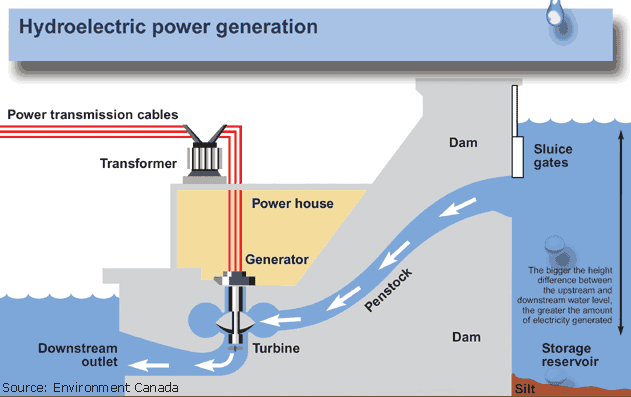
Hydroelectricity is used in large-scale scenarios, such as big bodies of water, reservoirs, and dams. It is also a safe, low-emission alternative for energy, which is a huge plus. However, benefitting from hydroelectric power takes lots of time, resources, and money. Do the risks outweigh the rewards? Find out below.
How hydroelectric energy works
Hydropower plants create energy by using the force of water to turn turbines. They operate similarly to how a coal-powered plant is run. For example, when coal is burned in a coal plant, the steam that is created powers turbines that then create electricity. With hydropower, the energy source that generates power is water. The most popular form of hydropower, also known as hydroelectric power, is a large dam that holds water in a reservoir, like the picture below. When electricity is needed, water is released from the reservoir, which then propels turbines to produce electricity.